- EasyCard
- Trade
- Help
- Announcement
- Academy
- SWIFT Code
- Iban Number
- Referral
- Customer Service
- Blog
- Creator
Should You Move to Norway The Realities of Daily Life
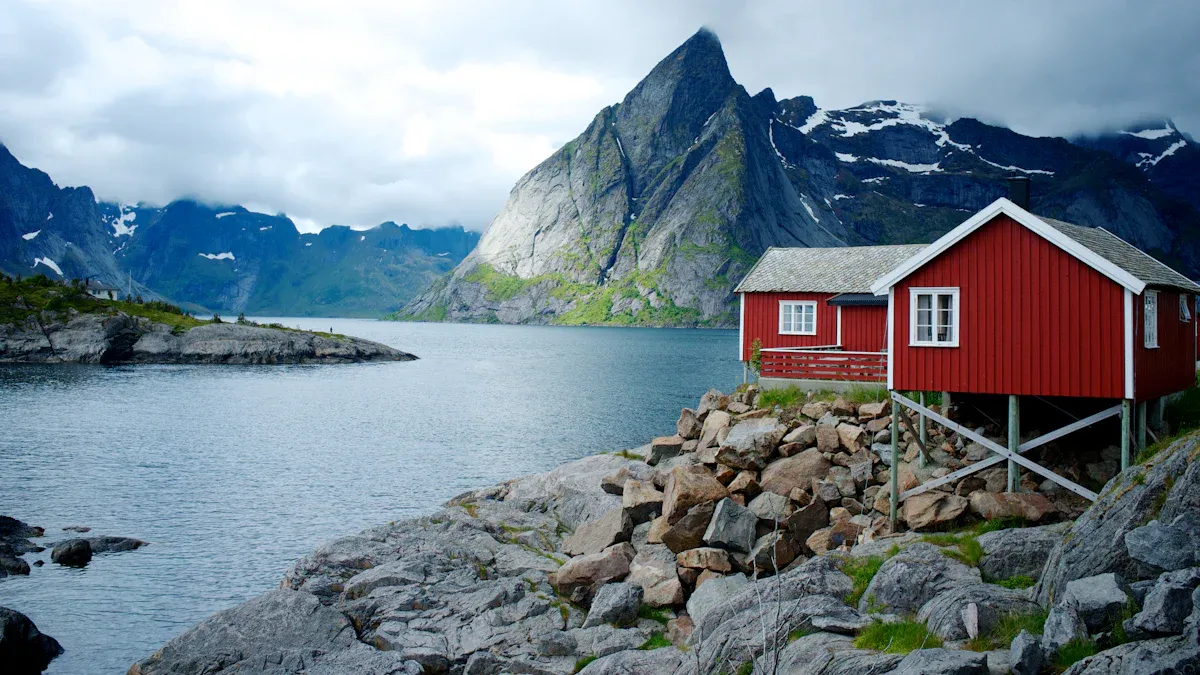
Image Source: unsplash
Should you pack your bags and start living in norway? The answer depends on what you want from daily life. Norway stands out for its high standard of living, but you will notice the cost of groceries and rent can feel steep. Take a look at how norway compares to other European countries:
| Country | Quality of Life Index (2025) | Purchasing Power Index | Safety Index | Health Care Index | Cost of Living Index | Pollution Index | Climate Index |
|---|---|---|---|---|---|---|---|
| Norway | 199.2 | 133.3 | 67.2 | 75.8 | 78.9 | 18.3 | 70.9 |
| Denmark | 215.1 | 152.7 | 74.0 | 78.3 | 74.1 | 20.9 | 81.2 |
| Switzerland | 210.9 | 183.5 | 73.3 | 70.8 | 106.8 | 24.0 | 80.6 |
| Finland | 208.3 | 142.9 | 73.5 | 77.4 | 64.5 | 11.7 | 54.4 |
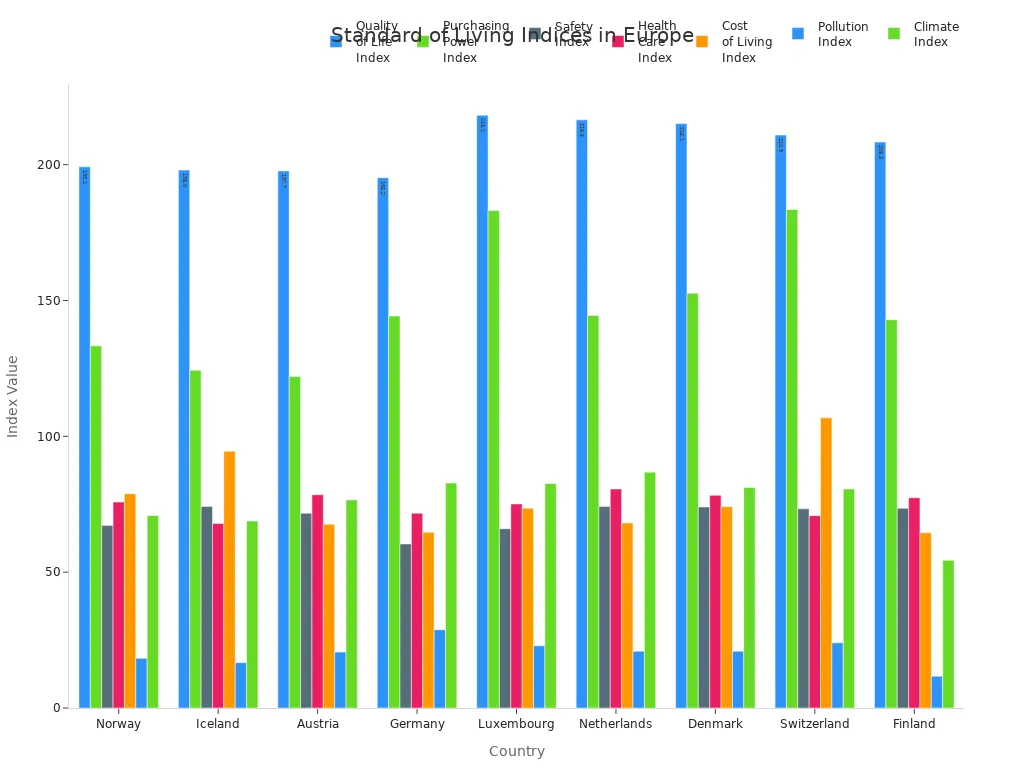
Many people find living in norway rewarding because of the sense of safety, trust, and strong social support. You might love the clean air and peaceful streets, but you could also feel the pinch of high prices. Think about what matters most to you in life, since satisfaction often comes from feeling connected, safe, and supported in your community.
Key Takeaways
- Norway offers a high quality of life with excellent healthcare, safety, and strong social support that make daily life comfortable and secure.
- The cost of living in Norway is high, especially for housing, food, and transportation, so budgeting and smart shopping help manage expenses.
- Work-life balance is excellent, with shorter workweeks, generous vacation, and flexible work options that support family time and well-being.
- Building a social life takes effort because Norwegians are reserved, but joining clubs, outdoor activities, and learning Norwegian helps you connect.
- Norway’s stunning nature and outdoor lifestyle shape daily routines, offering many ways to enjoy fresh air and stay active year-round.
Pros and Cons of Living in Norway
High Standard of Living
When you think about living in Norway, the high standard of living stands out as one of the biggest pros. Norway ranks near the top in Europe for quality of life, with excellent healthcare, education, and safety. You will notice that most people feel secure because of low crime rates and strong social support. The healthcare system is well-funded, and you can expect long life expectancy and good access to doctors and nurses. Education is free, and schools often provide students with modern tools like iPads. These benefits come from a system where the government spends a lot on public services, making daily life comfortable and safe.
Note: Norway’s healthcare system focuses on patient safety and quality. You get equal access to care, and the government covers most health expenses. However, dental care is not well covered, so you might find it expensive and less accessible than in other European countries.
You will also see that the best place to live in Norway depends on your lifestyle. Some people prefer big cities for job opportunities, while others enjoy smaller towns for peace and nature. No matter where you settle, you will experience a high standard of living, but you should also prepare for some trade-offs.
Cost of Living
The cost of living in Norway is one of the main cons for many expats. You will find that everything from rent to groceries and transportation is expensive compared to most other European countries. For example, the average monthly cost for a single person, including rent, is about $2,210. In Oslo, rent for a one-bedroom apartment ranges from $1,080 to $1,620 per month. Other cities like Bergen and Stavanger are slightly cheaper, but still costly.
| City | Average Monthly Rent (USD) |
|---|---|
| Oslo | 1,080 - 1,620 |
| Bergen | 900 - 1,350 |
| Stavanger | 810 - 1,260 |
| Trondheim | 720 - 1,080 |
You will also need to pay a large deposit when renting, usually two to three months’ rent upfront. Utilities and internet bills can add up, especially in winter. Food prices are high because Norway imports many products. Eating out is expensive, so most people cook at home to save money. Public transportation is reliable, but a monthly pass costs about $75. If you own a car, you will pay even more for tolls, fuel, and parking.
Tip: Shopping at budget supermarkets and using budgeting apps can help you manage your expenses. Building an emergency fund is also a smart move for newcomers.
Taxes are another important factor. Norwegian households pay about $70,000 per year in taxes, which fund free healthcare and education. High taxes mean you have less money left for personal spending, making everyday activities like dining out a luxury. This is a big con for many expats who are used to lower taxes and more disposable income.
Work-Life Balance
One of the biggest pros of living in Norway is the work-life balance. You will find that most people work about 33 to 34 hours per week, which is much less than in many other countries. The law sets a maximum of 40 hours per week, but collective agreements often reduce this to 37.5 hours. You usually work from 8:00 am to 4:00 pm, with an hour for lunch. Overtime is rare and always paid extra.
You get at least 25 paid vacation days each year, and many people enjoy five weeks off. If you are over 60, you get an extra week. Parental leave is generous, with up to 49 weeks of paid leave for new parents. These policies let you spend more time with family and focus on your health.
Norwegian culture values leisure and equality. People believe in “working to live,” not “living to work.” Companies often offer flexible hours, work-from-home options, and wellness programs. This approach supports happiness and reduces stress, but it can also limit your chances to earn more or advance quickly in your career. The Jante Law, a cultural norm, discourages standing out or showing off wealth. This means you may find fewer opportunities for financial advancement, which is a con if you want to climb the career ladder fast.
Social Life
Building a social life in Norway can be both a pro and a con. Norwegians value community, but they can seem reserved at first. You might need to take the first step to make friends. Joining clubs, sports teams, or outdoor activities like hiking and skiing helps you meet people. Language cafes and volunteering are also great ways to connect.
- You can join university clubs, sports teams, or student organizations to meet peers.
- Outdoor activities like hiking, skiing, and kayaking are popular and help you bond with others.
- Attending language cafes and local events lets you practice Norwegian and meet locals.
- Volunteering and joining community groups build meaningful relationships.
- Social media and apps can help you find gatherings and make friends.
- Embracing Norwegian traditions, such as the 17th of May celebrations, helps you integrate.
- Patience is key, as friendships develop slowly and Norwegians value personal space.
Learning Norwegian is important for feeling included. Many expats say that joining group activities and volunteering helps them feel connected. Social participation reduces isolation and boosts happiness. However, barriers like language, transportation, and costs can make it hard to join in at first.
Note: Norwegians describe their sense of community as strong, with shared values and emotional safety. Taking part in local events and learning the language will help you feel at home.
When you weigh the pros and cons of living in Norway, you see a country with a high standard of living, excellent work-life balance, and strong social support. However, you must also consider the high cost of living, high taxes, and the challenge of building a social life as an expat. Your experience will depend on your priorities and how you adapt to Norway’s unique culture.
Stunning Natural Scenery
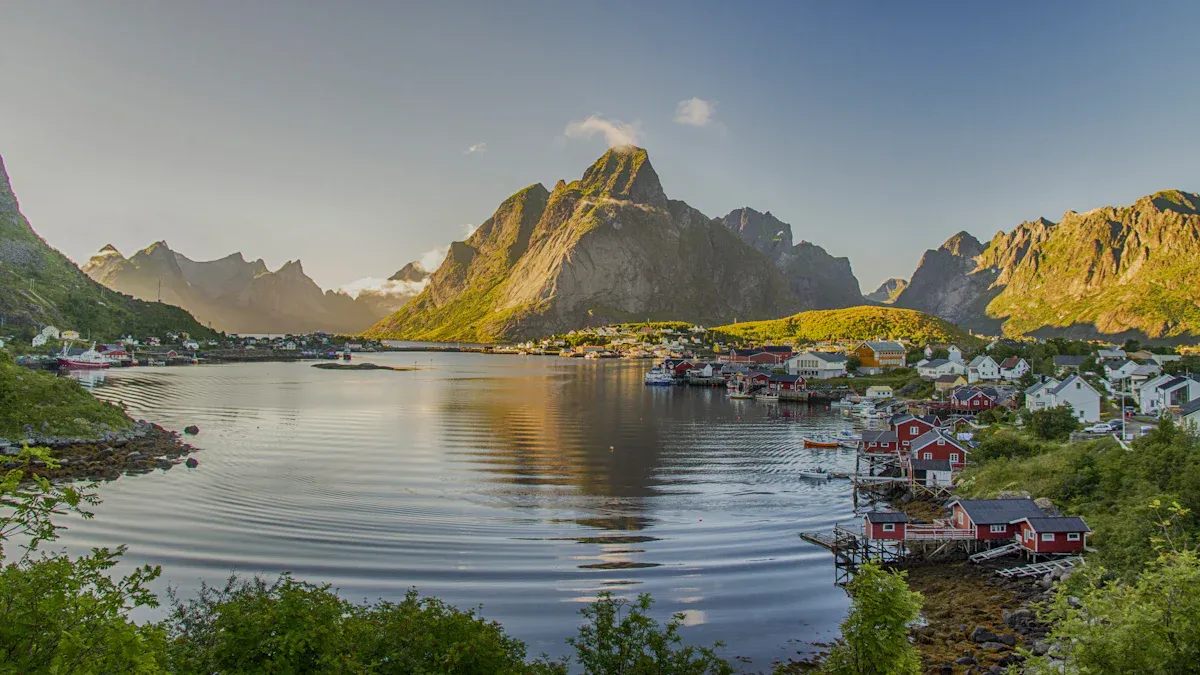
Image Source: pexels
Outdoor Activities
When you move to Norway, you step into a world filled with stunning natural scenery. The country is famous for its mountains, forests, and fjords. You can see this in the numbers: forests cover 38% of the land, and mountains and heaths make up 46%. That means almost 84% of Norway is covered by wild landscapes. Take a look at this breakdown:
| Natural Landscape Type | Percentage of Norway’s Land Area |
|---|---|
| Forests (total) | 38% |
| - Conifer forests | 21% |
| - Deciduous forests | 17% |
| Mountains and heaths | 46% |
| Bogs and wetlands | 6.3% |
| Lakes and rivers | 5.3% |
| Urban areas | 1.1% |
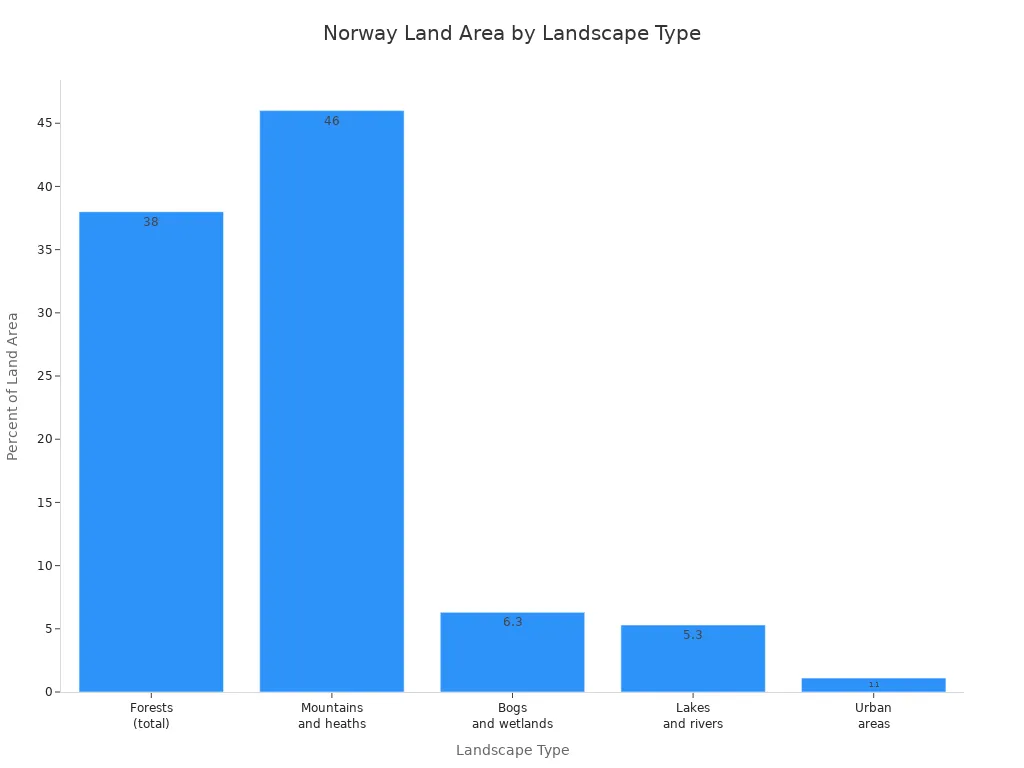
You will find that Norwegians love spending time outdoors. No matter the season, you can join in activities like hiking, cycling, swimming, kayaking, and climbing. In winter, people ski, toboggan, and use funiculars to reach mountain trails. Summer brings swimming in lakes, kayaking in fjords, and long hikes with friends. Even in cities, you can rent bikes, visit indoor swimming arenas, or relax in saunas. The seven mountains around Bergen are open for hiking all year. Norway’s scenery invites you to get outside and enjoy nature every week.
Nature in Daily Life
Nature is not just a backdrop in Norway—it shapes your daily routine. People here follow a lifestyle called “friluftsliv,” which means “fresh-air life.” You might bike to work, walk during lunch, or go for a jog after dinner. Even in places like Svalbard, where the sun never sets in summer, locals use the extra daylight for outdoor fun and social events. This connection to nature helps you feel calm, clear-headed, and creative.
You will notice that Norwegians spend time outdoors about three times a week. The law gives everyone the right to roam, so you can explore forests, mountains, and lakes freely. This freedom makes it easy to enjoy the stunning natural scenery, even if you live in a city like Oslo. Nature is a big part of Norway’s identity. It brings people together, supports mental health, and teaches respect for the environment. When you live in Norway, you become part of a culture that values both indoor comfort and outdoor adventure. The scenery is always close, and it shapes how you live every day.
Weather and Environment

Image Source: pexels
Seasons
When you move to norway, you will notice the seasons change in big ways. Winters can feel long and cold, while summers bring warmth and light. The weather in norway depends on where you live. Coastal cities have milder winters, but inland areas can get very cold. Some places have seen temperatures drop as low as -50°C. In summer, you might enjoy days as warm as 33°C. Rain and snow also change with the seasons. Autumn often brings the most rain, while spring is usually drier.
Here’s a look at average temperatures and rainfall in different regions of norway:
| Region | Winter Temperature Range (°C) | Summer Temperature Range (°C) | Notable Precipitation (mm) and Season | Humidity (%) and Season |
|---|---|---|---|---|
| Troms og Finnmark | -30°C (Jan-Mar), avg -6°C | Up to 32°C (July) | Peak precipitation in March (113 mm) | Up to 94% in January |
| Trøndelag | As low as -33°C (March) | Up to 33°C (July) | Heavy rain in March (134 mm), less in May (79 mm) | Around 93% in January |
| Vestfold og Telemark | Down to -26°C (Nov) | Up to 33°C (July) | Increased precipitation in September (>136 mm) | Peaks at 93% in winter |
| Vestland | Down to -29°C (Feb) | Up to 31°C (July) | Very high precipitation in October (335 mm) | Up to 94% in winter |
| Viken | Down to -26°C (Jan) | Up to 24°C (April) | Driest in April (38 mm), wetter in autumn | Around 95% in winter |
| Rogaland | Winter lows around -21°C (Feb) | Up to 31°C (July) | Heavy rain in October (316 mm) | Around 90% in autumn |
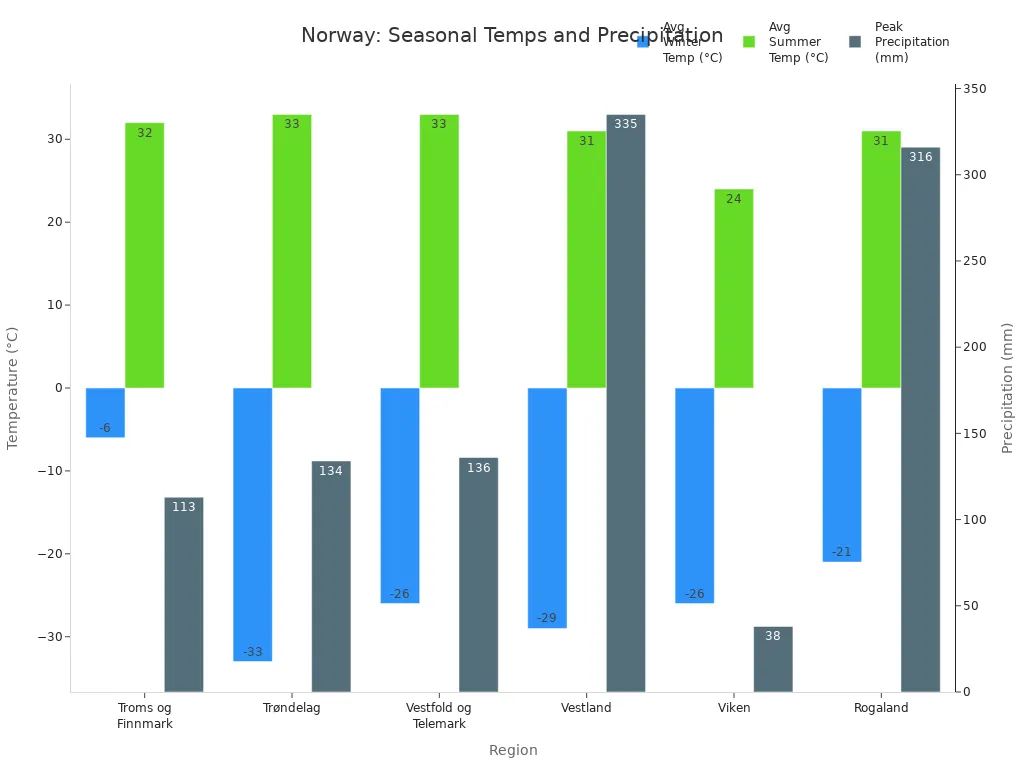
You will see that norway’s weather can surprise you. Some days in winter feel bitterly cold, but summer can be bright and pleasant. Humidity is highest in winter, making the cold feel even sharper. Spring and summer bring lower humidity and more comfortable days.
Coping with Darkness and Cold
Living in norway means you will face long, dark winters. The sun might not rise for weeks in the far north. Norwegians have learned to handle this darkness in smart ways. You will hear the saying, “There’s no such thing as bad weather, only bad clothing.” People dress in layers and wear warm coats, hats, and boots. This helps you stay outside and enjoy fresh air, even when it is freezing.
Inside, norwegians make their homes cozy. They turn off harsh lights and use lamps or candles. This creates a warm, friendly feeling called “big light off.” You might find yourself relaxing with friends, talking more, and enjoying the soft glow. This habit makes the darkness less scary and more inviting.
Norwegians also keep a positive mindset about winter. Many see it as a chance to try new things, like skiing or hiking in the snow. They use the word “koselig” to describe the special coziness of winter. Research shows that people in norway who think about winter in a positive way feel happier and healthier. You can learn to enjoy the season by joining in outdoor fun and making your home a place of comfort.
Work and Job Market in Norway
Job Opportunities
When you start living in Norway, you will notice that the job market can feel both welcoming and competitive. Norway has a strong economy, but job openings depend on your skills and where you want to live. The unemployment rate changes from year to year. In June 2025, it rose to 5.4%, but experts expect it to drop to about 4.1% by the end of the year. Most regions have rates close to the national average.
| Region | 2023 Unemployment Rate |
|---|---|
| Norway (National) | 3.6% |
| Northern Norway | 2.8% |
| Oslo and Viken | 3.9% |
| Trøndelag | 3.5% |
| Agder and South-East Norway | 3.6% |
You will find the most in-demand jobs in healthcare, education, and skilled trades. For example, nurses, health care assistants, and teachers are needed in many places. Electricians, welders, and cooks also have good chances. If you have a background in the norwegian education system or world-leading education, you may stand out to employers.
If you want to work in Norway, you must meet some requirements:
- Non-EU citizens need a residence permit and a job offer from a Norwegian employer.
- You must show proof of your skills and education.
- After arriving, you must register with the National Population Register for healthcare and taxes.
- EU/EEA nationals do not need a visa but must register with the police if staying longer than three months.
- You must understand Norway’s progressive taxes and health insurance rules.
Employers often help with the visa process. You should prepare your documents and expect the process to take several weeks.
Language and Integration
Norwegian language skills are very important for finding work and feeling at home. Most employers want you to speak and understand Norwegian well. If you work in healthcare or education, you must pass language tests. Good language skills help you join the workplace, avoid misunderstandings, and build a strong network.
You will see that learning Norwegian helps you make friends and join local activities. The government offers language courses for expats. These classes help you pass tests and improve your daily conversations. If you speak Norwegian, you can join more social groups and grow your network faster.
Poor language skills can make it hard to get a job or keep one. Some expats face problems at work because they do not understand instructions or safety rules. In healthcare, language is a legal requirement. The Norwegian Introduction Programme helps new arrivals learn the language and understand local customs.
Tip: Start learning Norwegian before you arrive. Practice every day, join language cafes, and use online tools. This will help you adjust to living in Norway and open more job opportunities.
Everyday Practicalities
Housing
Finding a place to live in Norway can feel like a challenge, especially in big cities. Oslo has the highest rents, and you will notice that landlords often want a security deposit equal to three months’ rent. Many landlords prefer tenants with a Norwegian tax ID, so getting one early helps. Rental prices change with the seasons, especially when students arrive or tourists visit. Take a look at the average monthly rent for apartments in major cities:
| City | Small Apartment (USD/month) | Medium Apartment (USD/month) | Large Apartment (USD/month) |
|---|---|---|---|
| Oslo | $1,400 | $1,670 | $1,930 |
| Bergen | $1,050 | $1,310 | $1,570 |
| Trondheim | $1,030 | N/A | $1,640 |
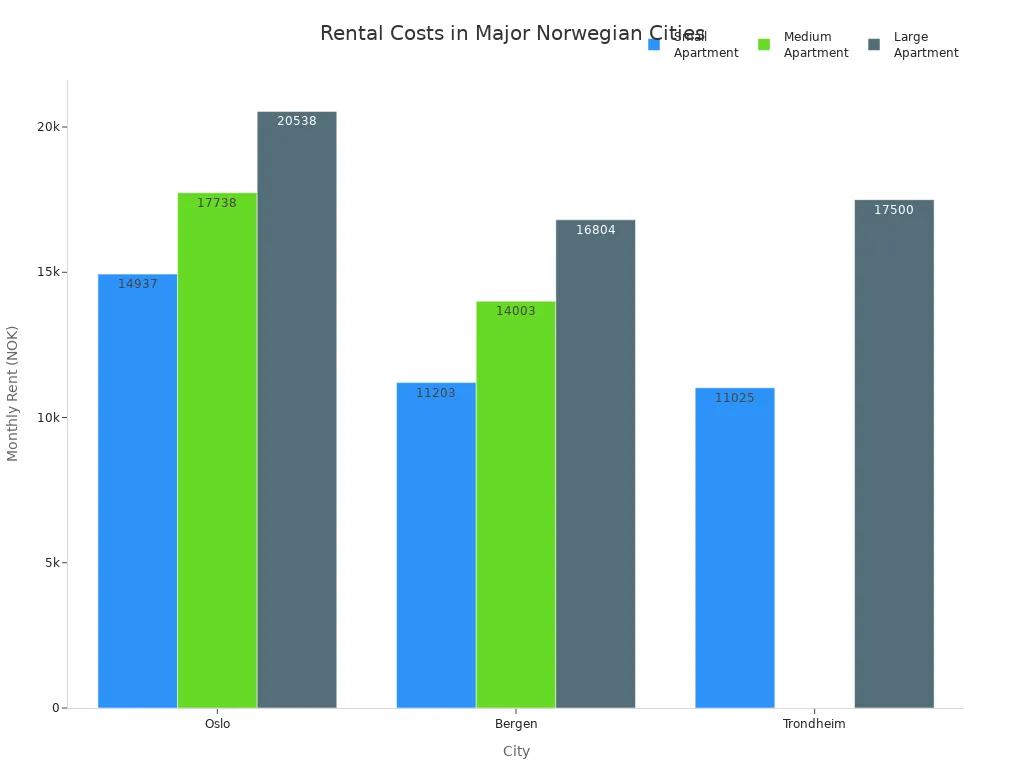
You will find that high quality homes are common, with good insulation and modern features. Most apartments come unfurnished, so you may need to buy furniture. The rental market in Norway is competitive, but you can find high quality homes if you start your search early.
Transport
Getting around Norway is easy in cities. Oslo and other urban areas offer metro, tram, and bus services. Ticket prices stay stable, and you can use one ticket for different types of transport. In rural areas, buses are the main option, but they run less often. You might need a car if you live outside the city. Public transport in Norway is clean and safe, but it gets crowded during rush hour. Here’s a quick look at how transport works:
| Aspect | Urban Areas (Oslo) | Rural Areas |
|---|---|---|
| Main transport modes | Metro, tram, bus, train | Bus |
| Ticket system | Simple, covers all modes | Simple, but fewer options |
| Service frequency | High | Low |
| Cost | Stable, affordable | Stable, but less frequent |
You will see that Norway’s cities make it easy to travel without a car. In the countryside, you may need to plan ahead.
Healthcare
Norway offers universal healthcare to everyone who lives there. You can choose your own doctor, and most care is free or has a small fee. Hospitals are modern and well-staffed. Universal healthcare means you do not worry about big medical bills. If you need a specialist, your doctor will refer you. Norway’s healthcare system is similar to other Nordic countries, with the government running hospitals and local clinics. You will find that universal healthcare covers most needs, but you may pay extra for dental care or private services.
| Aspect | Norway | Sweden | Finland | Denmark |
|---|---|---|---|---|
| Primary Care | Choose your own GP | Clinics, fast access | Local health centers | GP as main contact |
| Hospital Care | Free inpatient care | Mix of hospitals | Local hospitals | Regional hospitals |
| Funding | Tax-based, small fees | State-funded, capped | Taxes and insurance | State and local taxes |
You will feel safe knowing that healthcare in Norway is reliable and easy to access.
Digital Services
You will notice that Norway leads in digital banking. Most people use online banks for daily needs. These banks offer fast service and low fees. Young people love the convenience and easy apps. You can open accounts, pay bills, and transfer money without visiting a branch. Digital services grow every year, making life in Norway more efficient. While there is little public data on digital government services, you will find that most paperwork, like taxes and healthcare appointments, happens online. This saves you time and keeps things simple.
Cultural Differences
Social Norms
When you move to Norway, you will notice that daily interactions feel different from many other places. People here value equality and modesty. The Law of Jante, or janteloven, shapes how Norwegians act. You will see that people avoid bragging and focus on community. This creates an open and inclusive culture where everyone feels welcome. Norwegians respect rules and trust their government. You will find that most people follow the same social expectations, like being polite and helping with community projects called dugnad. Norwegians often keep to themselves at first, but they are friendly once you get to know them. If you want to make friends, learning Norwegian and joining local groups helps a lot.
- You may need to adjust to:
- Dramatic changes in daylight, like the midnight sun and polar night.
- Informal workplaces with little hierarchy.
- Strict alcohol rules and early lunch breaks.
- Most shops closing on Sundays for family time.
- A strong coffee culture with many breaks.
Food and Traditions
Norwegian food culture is unique and simple. You will see that most people eat at home and enjoy a cozy feeling called “koselig.” Meals happen early, usually around 4:30 or 5 pm, and focus on togetherness. Unlike southern Europe, where people eat late and have long dinners, Norway keeps meals short and social. Breakfast and lunch often include bread, cheese, and open-faced sandwiches. Dinner is simple, using local foods like fish, game, and preserved items. This style comes from long winters and the need to store food.
- Norwegian food culture stands out because:
- People value homemade meals and sharing with family.
- Traditional dishes include sodd (meatball soup), rømmegrøt (sour cream porridge), and brunost (brown cheese).
- At Christmas, baking seven types of cookies is a special tradition.
- Local berries, like cloudberries, are a treat in many desserts.
- Meals are about comfort and social connection, not just eating.
You will notice that food culture in Norway is about more than taste. It brings people together and helps you feel part of the community.
Family Life
Family life in Norway centers on support, equality, and time together. Most families include two parents, but you will also see single-parent and stepfamilies. The welfare system gives all families access to daycare, free school, and healthcare. This support makes raising kids in norway less stressful. Parents focus on being responsive and fair. You will find that even immigrant families keep strong ties and value education. Indigenous Sami families teach independence and love, while also keeping their language and traditions alive.
Norway’s open and inclusive culture means that all types of families get support. You will see that family time is important, especially on Sundays when most shops close. This gives everyone a chance to relax and connect. If you plan to start a family or bring children, you will find that Norway makes it easier to balance work and home life.
When you think about living in norway, you see both great benefits and real challenges. You get a high quality of life, strong social support, and beautiful scenery. Still, you face high costs and a unique culture. Take a look at some important factors:
- Honest and trusting people
- Efficient digital services
- High taxes and living costs
- Slow social integration
- Language skills matter for jobs
| Factor | Description |
|---|---|
| High standard of living | Strong support, safety, and freedom shape daily life. |
| High cost of living | Expenses for housing and daily needs can be steep. |
Think about what you want from life. Living in norway fits people who value safety, nature, and community. If you want fast-paced change or low costs, you may need to adjust.
FAQ
Do you need to speak Norwegian to live in Norway?
You can get by with English in big cities, but learning Norwegian helps you find jobs and make friends. Most Norwegians speak English, but daily life feels easier when you understand the local language.
How expensive is daily life in Norway?
Living costs are high. Groceries, rent, and eating out cost more than in many countries. For example, a coffee costs about $4.50, and a meal at a restaurant can reach $25. Budgeting helps you manage your expenses.
What is healthcare like for expats?
You get access to Norway’s public healthcare system if you register as a resident. Most services are free or have small fees. Dental care is not fully covered, so you pay extra for those visits.
Is it hard to make friends in Norway?
Norwegians seem reserved at first. You need to take the first step. Joining clubs, sports, or volunteering helps you meet people. Friendships grow slowly, but you will find loyal friends once you connect.
Moving to Norway means adjusting to both its rewards and challenges. While you enjoy world-class healthcare, safety, and natural beauty, you also face high living costs and the reality of transferring money across borders — from paying deposits to managing monthly expenses.
That’s where BiyaPay can make your transition smoother. With real-time exchange rates, multi-currency and crypto-to-fiat conversions, and global coverage with same-day transfers, BiyaPay helps you save money and time. Most importantly, you’ll only pay as low as 0.5% in transfer fees — far less than traditional banks.
Settle into your new life with confidence: manage your finances locally with Norwegian digital banks, and move your money globally with BiyaPay.
*This article is provided for general information purposes and does not constitute legal, tax or other professional advice from BiyaPay or its subsidiaries and its affiliates, and it is not intended as a substitute for obtaining advice from a financial advisor or any other professional.
We make no representations, warranties or warranties, express or implied, as to the accuracy, completeness or timeliness of the contents of this publication.




Contact Us
Company and Team
BiyaPay Products
Customer Services
is a broker-dealer registered with the U.S. Securities and Exchange Commission (SEC) (No.: 802-127417), member of the Financial Industry Regulatory Authority (FINRA) (CRD: 325027), member of the Securities Investor Protection Corporation (SIPC), and regulated by FINRA and SEC.
registered with the US Financial Crimes Enforcement Network (FinCEN), as a Money Services Business (MSB), registration number: 31000218637349, and regulated by FinCEN.
registered as Financial Service Provider (FSP number: FSP1007221) in New Zealand, and is a member of the Financial Dispute Resolution Scheme, a New Zealand independent dispute resolution service provider.



















